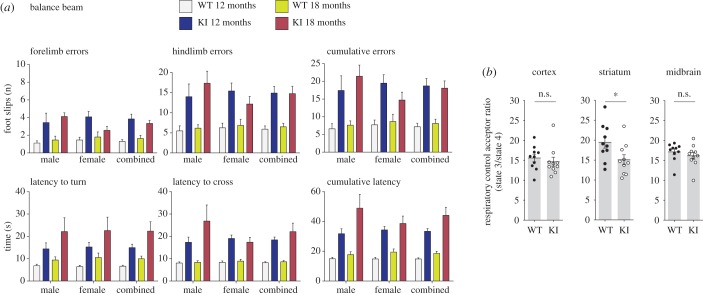Figure 3.
ParkinS65A/S65A mice exhibit selective impairments on a sensitive task of voluntary motor function. (a) Balance beam performance in ParkinS65A/S65A (KI) and wild-type mice at 12 months and 18 months of age. Animals were assessed by their ability to reach a platform by competently traversing a raised and tapered beam. The performance was recorded by the number of errors scored as slips (forelimb, hindlimb and combined). ParkinS65A/S65A mice made significantly more forelimb errors and hindlimb errors at 12 and 18 months (p < 0.01) than their WT littermates. The ParkinS65A/S65A mice also demonstrated an age-related decline in their ability to orientate themselves on the beam end and cross the beam, resulting in longer latencies on both measures compared to WT littermates (p < 0.01). Error bars represent the standard error of the mean. (b) Striatal RCR is affected in ParkinS65A/S65A mice. Mitochondrial respiratory acceptor control ratios in the striatum, midbrain, and cortex of 1-year-old aged wild-type and ParkinS65A/S65A mice (n = 10 per group).

